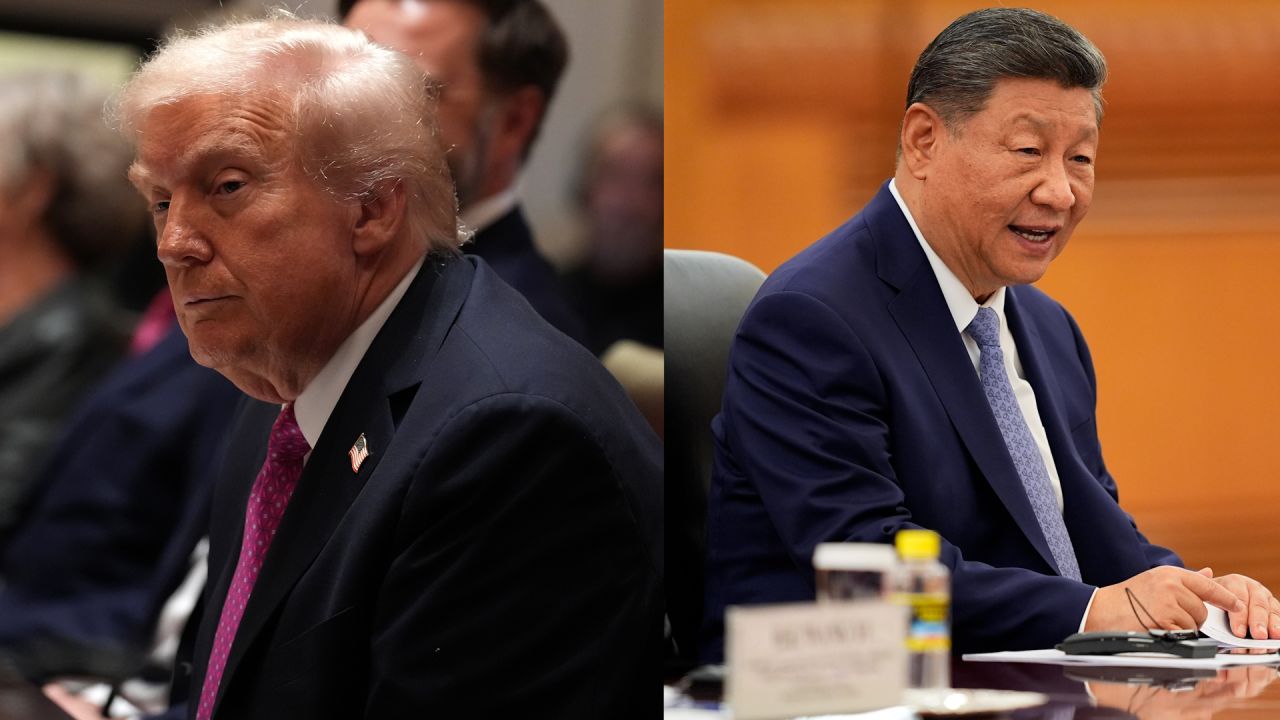KUALA LUMPUR, Malaysia – President Donald Trump departed Malaysia Monday morning, completing the first leg of his three-nation diplomatic tour in Asia. The U.S. leader, who has spent the past few days engaging with Southeast Asian officials and attending key summits, is now en route to Tokyo, where he is scheduled to meet Japan’s newly elected conservative prime minister, Sanae Takaichi, as well as Emperor Naruhito at the Imperial Palace.
Trump’s visit to Malaysia was marked by a mix of ceremonial diplomacy and substantive economic discussions. He joined the signing of a peace declaration between Thailand and Cambodia, attended a summit with ASEAN leaders, and highlighted progress in U.S.-China trade negotiations. While on the tarmac at Kuala Lumpur International Airport, Trump waved to a crowd of supporters holding American and Malaysian flags before boarding Air Force One for the short flight to Japan. Unlike the celebratory welcome, the departure was subdued, with no fanfare beyond brief remarks to the press.
During his time in Malaysia, Trump took to social media to emphasize what he described as “major diplomatic and economic achievements.” In one post, he wrote, “NO WAR! Millions of lives saved. Such an honor to have gotten this done. Now, off to Japan!!!” While he referred to the Thailand-Cambodia document as a “peace treaty,” officials clarified that the signed document is technically a declaration.
Beyond ceremonial engagements, the administration signaled potential breakthroughs with Beijing. Trump’s top trade negotiators met with Chinese counterparts over the weekend, laying the groundwork for his upcoming face-to-face meeting with Chinese President Xi Jinping later this week. Treasury Secretary Scott Bessent described the discussions as producing a “substantial framework” for a trade deal, averting a previously threatened tariff hike of up to 157% on Chinese goods. The agreement could include increased Chinese purchases of U.S. soybeans, delayed export curbs on rare-earth minerals, and a framework for addressing fentanyl precursor chemicals. Trump is also expected to finalize a U.S. investor-led deal to manage TikTok’s algorithm in the United States, minimizing Chinese influence over the popular app used by over 170 million Americans.
Bessent, who also owns significant soybean and corn farmland in North Dakota, noted that the proposed framework would bring relief to U.S. farmers who have struggled amid the trade tensions with China. “Soybean farmers are going to be extremely happy,” he said, highlighting the “perfect storm” that American agriculture faced due to reduced Chinese purchases and competition from other international suppliers. U.S. Trade Representative Jamieson Greer echoed Bessent’s optimism, noting that China’s resumption of agricultural purchases could stabilize U.S. markets.
While Trump pursues diplomatic wins abroad, Washington faces mounting domestic crises. The federal government shutdown continues with no resolution in sight, affecting millions of Americans. The U.S. Department of Agriculture recently announced that its $6 billion contingency fund will not cover Supplemental Nutrition Assistance Program (SNAP) benefits for November if the shutdown persists. This decision puts approximately 42 million Americans at risk of losing critical food assistance. Despite President Trump’s assurances that “everybody is going to be in good shape,” USDA officials have cautioned states that there is insufficient funding to meet obligations without congressional action.
Transportation is also being disrupted as a result of the shutdown. The Federal Aviation Administration has reported significant flight delays across major airports, with Transportation Secretary Sean Duffy blaming Democrats for staffing shortages. Meanwhile, disputes over federal oversight continue, exemplified by Duffy’s move to withhold $160 million in funding from California following a deadly truck crash. California Governor Gavin Newsom criticized the action as political opportunism and emphasized the federal government’s responsibility in regulating employment authorizations.
On the international security front, Trump’s military operations in the Caribbean and South America are drawing scrutiny. Reports indicate the president may authorize strikes against alleged drug-trafficking operations in Venezuela and Colombia without congressional approval. Republican Senator Lindsey Graham defended Trump’s authority under Article Two of the Constitution, framing the potential military actions as a measure to protect the U.S. from foreign threats. In contrast, Senators Mark Kelly, Tim Kaine, and Rand Paul raised constitutional and legal concerns, describing some of the operations as potential “extrajudicial killings.”
Treasury Secretary Bessent and other U.S. officials emphasize that the upcoming Trump-Xi meeting will be pivotal, not only for trade but also for global security and sanctions enforcement. U.S. Ambassador to NATO Matthew Whitaker highlighted the potential for China to align with the U.S. and allies in pressuring Russia, particularly over the continued purchase of Russian oil and gas. Additionally, discussions are expected to cover TikTok’s U.S. operations, rare-earth mineral trade, and agricultural exports, including soybeans, which are critical to Midwest farmers.
Financial markets have reacted positively to the progress in U.S.-China negotiations. Dow futures rose 0.65%, the S&P 500 gained 0.74%, and Nasdaq futures climbed 0.92%, reflecting optimism that the framework agreement may prevent new tariffs and possibly influence Federal Reserve interest rate decisions. The Dow recently crossed 47,000 points, buoyed by data suggesting inflation pressures were below expectations.
As Trump continues his Asian tour, his itinerary in Japan includes meetings with Emperor Naruhito, Prime Minister Sanae Takaichi, and other senior Japanese officials. Analysts expect a blend of ceremonial protocol and substantive discussions on regional security, trade, and technology cooperation. Japan’s conservative leadership is likely to emphasize alignment with U.S. policy in the Indo-Pacific region, particularly amid tensions with China and North Korea.
Trump’s Asian tour, combined with ongoing negotiations with China and military operations in South America, underscores a broad and ambitious foreign policy agenda. The president is navigating complex diplomatic, economic, and security challenges while the domestic political landscape faces unprecedented pressure from a prolonged government shutdown. How these initiatives unfold may shape U.S. global influence and domestic stability in the months ahead.

